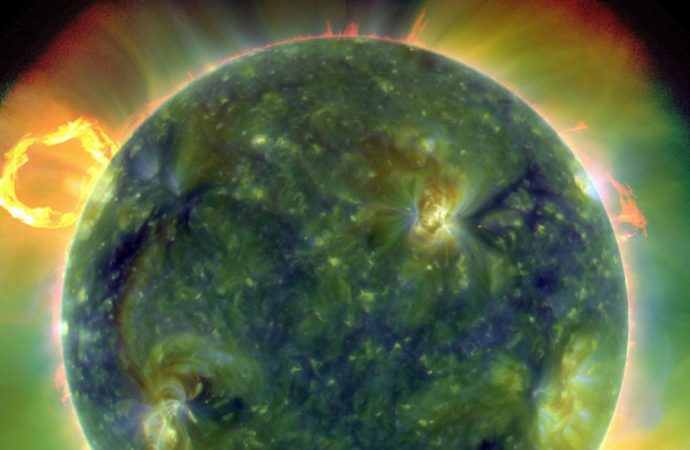In addition to the constant emission of warmth and light, our sun sends out occasional bursts of solar radiation that propel high-energy particles toward Earth.
These solar energetic particles, or SEPs, can impact astronauts or satellites. To fully understand these particles, scientists must look to their source: the bursts of solar radiation. NASA has revealed new information regarding these particles, and how they travel, revealing a pattern that is much wider and farther than previous models predicted—explaining how SEPs find their way to even the far side of the sun.
The diagram below took place over the course of just three hours after a SEP event. The white line represents a magnetic field line, the general path that the SEPs follow. The line starts at an SEP event at the sun, and leads the particles in a spiral around the sun. The animation of the updated model, on the right, depicts a static field line, but as the SEPs travel farther in space, turbulent solar material causes wandering field lines. In turn, wandering field lines cause the particles to spread much more efficiently than the traditional model, on the left, predicted. (NASA’s Goddard Space Flight Center/UCLan/Stanford/ULB/Joy Ng)
With this added information, models now show SEPs spiraling out much wider and farther than previous models predicted—explaining how SEPs find their way to even the far side of the sun. Understanding the nature of SEP distribution helps scientists as they continue to map out the origins of these high-energy particle https://www.nasa.gov/feature/goddard/2016/wayward-field-lines-challenge-solar-radiation-modelss. A paper published in Astronomy and Astrophysics on June 6, 2016, summarizes the research, a result of collaboration between the University of Central Lancashire, Université Libre de Bruxelles, University of Waikato and Stanford University.
Source: The Daily Galaxy
































Leave a Comment
You must be logged in to post a comment.